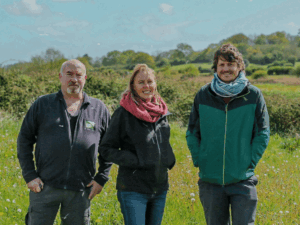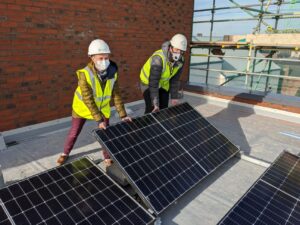State of nature
In June 2021 I helped Dorset Wildlife Trust restore 420 acres of land (around 230 football pitches) to nature and people. Here’s the story of why and how.
The 2019 State of Nature Report was a wake-up call for everyone with a love of nature. The UK, as a nation of animal lovers, is in fact one of the most nature depleted countries on earth and that report made that clear. I knew that our wildlife was suffering, but the report shocked me in detailing just how desperate things were for wildlife in our supposedly green and pleasant land.
From our hedgehogs to our songbirds, bumble bees to butterflies, badgers, water voles – you name it – the other animals we share our country with have been starved, poisoned and made homeless by our assumption that all land is just there to serve our species – and all other animals have to simply make do with what little space is left. Not to mention our indigenous plant life – squeezed out by both agriculture and our obsession with neat gardens, parks and laybys filled with not particularly wildlife friendly plants. We fight a war against the plants that really belong in our gardens, towns and cities – demonising them as weeds and poisoning them and us with toxic herbicides.
Our insects, so essential to pollinate, to clean up and to feed our much loved birds and bats are in the midst of the Insect Apocalypse. We might find it convenient that our wind screens are no longer splattered with flying insects – but birds and animals that rely on insects for food, and our plants that rely on them for pollination, aren’t doing so well.
Money as emergency equipment
In 2018 I sold my stake in Osprey Europe Limited, a company I helped set up in 2003 and which distributed back packs, travel bags and accessories. So when the 2019 State of Nature report came out I was newly in a position of having some money to do my bit about the plight of nature in the UK. I knew that I wanted to use some of my new wealth to help tackle the multiple threats to safe living conditions on earth, but I hadn’t yet had time to think about how to do that most effectively. For some of the conclusions I’ve reached a few years on see Investing for impact and Becoming wealthy.
An obvious start seemed to be to buy some land where I could let nature recover and thrive.
My first step was to speak with charities working to protect nature in Dorset where I live. I wanted to ensure that any land I bought was appropriate and likely to make a genuine difference. So I spoke to people working in Dorset for the RSPB, the National Trust, the Woodland Trust and, of course, Dorset Wildlife Trust.
It was the Woodland Trust who told me about a scheme by the Esmée Fairbairn Foundation to help charities buy land. When suitable land for purchase comes on the market, to have a chance of buying it charities often have to act quickly which is difficult as they need time to raise funds to pay for the land. The Esmée Fairbairn Foundation have a designated fund which they use to help charities in this situation. If they agree to help with a purchase, EFF buy the land and give the charity 2 years to buy it back.
This seemed like a great idea, but I felt it would be simpler and involve less legal costs to just lend the money to the charity to buy the land itself, giving it time to raise funds and pay back the loan.
Philanthropic loans
The more I thought about it the more I loved this idea.
I wanted to secure land for nature and people beyond my lifetime and in the hands of experts in conservation, rather than an amateur enthusiast like me.
If I used my money to buy land to rewild myself that would be just one project and one bit of land secured. However, if I loaned money to a charity to buy land when it became available, once the loan was repaid to me, I could then help facilitate another land purchase for nature and people and so on.
So in the summer of 2020 I started negotiating the purchase of Court Farm, land south of the village of Bere Regis in Dorset, and at the same time started discussing the land with local charities.
Loan plus donations – a winning combination
After getting my offer to buy Court Farm accepted I continued discussions with local charities and eventually agreed to work with Dorset Wildlife Trust to secure the land in their expert care by lending them the money to buy it. I also made donations to Dorset Wildlife Trust to cover some initial costs like surveys and to fund a new role within Dorset Wildlife Trust to manage the project. This role was filled by a very experienced conservationist, Rob Farrington, whose first job was to pursue funding for the land acquisition.
The combination of the loan offer and donation to cover Rob’s post turned out to be the perfect combination.
By leading on the purchase and liaising with the conveyancing solicitor I gave Rob at Dorset Wildlife Trust time to focus on obtaining funding for the land including from our local councils. As often happens, the conveyancing process took a long time and so by the time that completion of the purchase took place Rob already had full funding for the purchase price lined up and so I only had to lend for a very short time.
I was then able to continue straight on with helping with 2 more acquisitions:-
- Helping the National Trust buy Weston Farm in the Isle of Purbeck, by negotiating with the seller until the National Trust was in a position to take over
- Agreeing a loan to Radnorshire Wildlife Trust to help them buy 167 acre Pentwyn.
Since then many more sites have been added to the list – see Funding Nature – and the list continues to grow.
“The backing and support of Julia in acquiring Wild Woodbury was vital. The donation of funds to support a dedicated member of staff and the knowledge that a philanthropic loan was available for the purchase gave us the time and space to secure funds and wider support for this groundbreaking acquisition.”
Brian Bleese, Chief Executive, Dorset Wildlife Trust
A reading journey through nature restoration
After reading the headlines on the State of Nature Report I kept reading. Here’s some of the books I’ve found most helpful in understanding the extent of the nature crisis and what we can do to help nature recover.
Wild : An Elemental Journey by Jay Griffiths
Wilding : The Return of Nature to a British Farm by Isabella Tree about the Knepp Estate
Rebirding : Restoring Britain’s Wildlife by Benedict Macdonald
Rewilding : The Radical New Science of Ecological Recovery by Paul Jepson and Cain Blythe
Rebugging the Planet by Vicki Hird
The Garden Jungle: or Gardening to Save the Planet by Dave Goulson
Less is more: Improving profitability and the natural environment in hill and other marginal farming systems by Chris Clark and Brian Scanlon, with drafting by Kaley Hart
Ongoing involvement
You may be considering buying land yourself to rewild and that’s great. However, there are many advantages to helping a charity or community organisation buy the land instead as explained at Funding Nature.
I feel just as much connection with Wild Woodbury (as Court Farm is now called) as I would have done if I now owned it personally. As far as I am concerned, Wild Woodbury is mine, it just happens to also belong to everyone else that wants to enjoy and protect it as a home for wildlife and it is in the expert custodianship of Dorset Wildlife Trust.
I can get involved in Wild Woodbury as a volunteer as much or as little as I want – which for me is perfect as my aim is to help catalyse as many projects to restore land to nature and people as possible. If I owned Wild Woodbury I just wouldn’t have time to do that.
Legacy
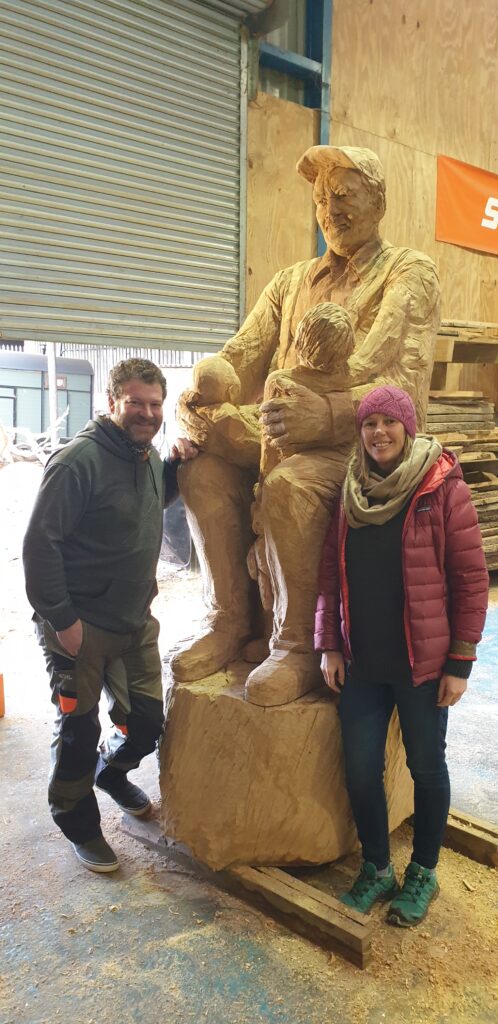
Helping with this first land acquisition will always be incredibly special to me and I wanted to commemorate this on the site. In 2013 I lost my father after a long battle with lung disease. John Davies was a much loved father to 4 daughters and adored Grancha to his grandchildren and great grandchildren. Like many men of his generation, Dad was out working all hours when his own children were young, and Dad had more time with his grandchildren than his own children.
To commemorate my Dad, and more generally the special bond between grandparents and grandchildren, I commissioned a wooden carving of my Dad with a grandchild sat on each knee – which is how I will always remember him. Dad now sits in Wild Woodbury in an area that I hope will be a place were grandparents and grandchildren can come to share special memories.
Dad’s carving was created by environmental artist Simon O’Rourke from Welsh oak, in recognition of our proud Welsh heritage. You can see some of Simon’s incredible work here.
Court Farm becomes Wild Woodbury
Court Farm is close to the village of Bere Regis in Dorset and there are many other villages and towns nearby. An important first step in caring for the land was community engagement and ensuring that a diverse range of voices were heard.
Court Farm is now Wild Woodbury, a name chosen by the local community to recognise the history of the site.
Still producing food
Rewilding has sometimes been criticized for taking land out of food production. Food security is an important issue and taking good quality agricultural land out of food production wouldn’t make sense. But there is plenty of land in the UK which is farmed without producing much food and that was what was happening at Wild Woodbury.
Although called a farm, there was no one farmer living at and farming the site. The land was owned by a trust set up to benefit various members of the Drax family, whose family have owned huge areas of land in Dorset and elsewhere for many years, having originally made much of their fortune on the back of the slave trade. The Drax Trust rented the land out to various farmers, and most of the land was used to raise a small number of male dairy cows to supply fairly low grade meat. The cows grazed about 11 acres of the site, and much of the rest of site was used to grow crops to feed to those cows.
Due to the poor nature of the soil, to grow those crops considerable amounts of fertilizers were added to the land to add nutrients like nitrogen. Much of that nitrogen was then washed from the land into water courses, causing pollution of rivers, streams and eventually our ocean at Poole Harbour, a site of Special Scientific Interest. This pollution causes a particular problem in Poole Harbour in resulting in algal blooms which effectively suffocate wildlife.
See Farmers told to slash nitrogen pollution flowing into Poole Harbour | The Independent
It is likely that farming the site only made sense financially due to farming subsidies such as basic payments.
Wild Woodbury now still produces food. Large grazing animals are an important part of a healthy ecosystem. There are plenty of deer at Wild Woodbury, but cows graze in a different way and their grazing can actually help indigenous plantlife re-establish. So Wild Woodbury is now home to a small herd of hardy Original Population Hereford cows owned and managed by a local farmer whose family have farmed the land as tenant farmers for generations. She also looks after the 5 Exmoor ponies now roaming the site and she will also soon be having fun with the arrival of Mangalitsa pigs who will provide some much needed disturbance to create bare ground for pioneer plant species of plants to grow.
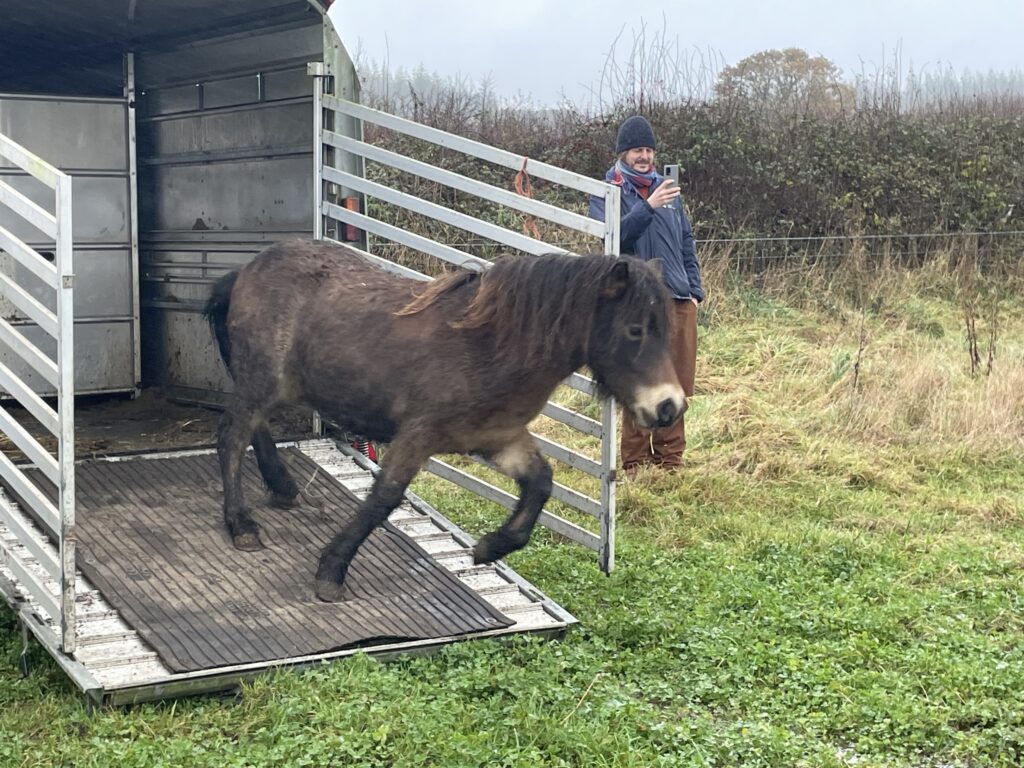
So as well as providing a wonderful haven for nature to recover, Wild Woodbury is also showcasing a kinder more sustainable way of producing high quality meat.
On top of this, part of the site already contained allotments. Opportunities for community food growing are being expanded, with a food forest planted to the north of the site, closest to the village.
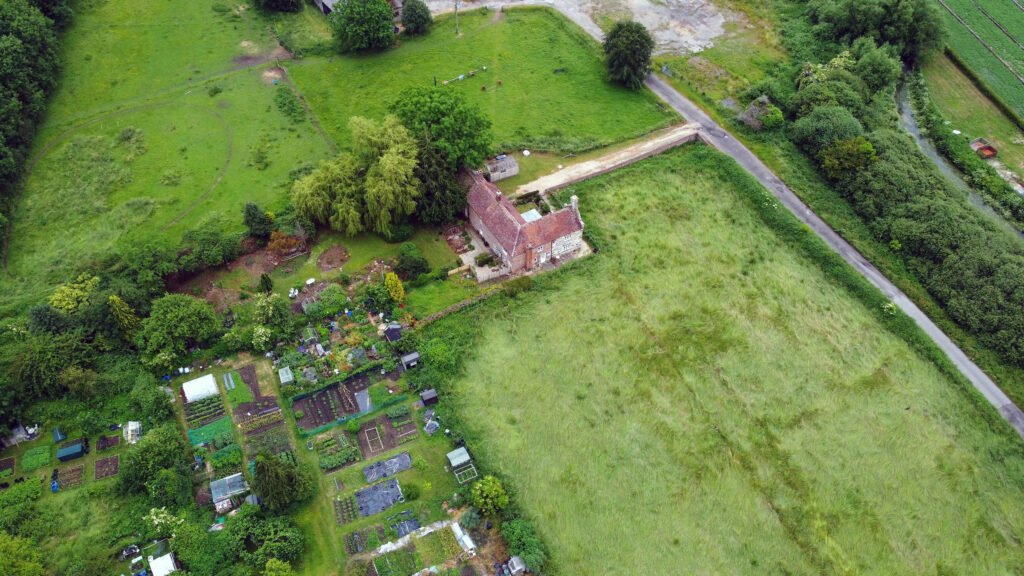
Vital for food security
Most importantly climate and ecological breakdown are the two biggest factors in food security by a country mile. We cannot grow food without a stable climate or functioning ecosystems. UK Government reports spell this out in a terrifyingly clear manner in the Food Security Report of 2021 and the follow up studies in 2022 all found here Impact of climate change and biodiversity loss on food security – House of Lords Library (parliament.uk).
In allowing nature to recover in Wild Woodbury, and other sites restored to nature by Wildlife Trusts and other wildlife charities, we are directly helping to tackle both dangerous climate change and environmental degradation, strengthening our food security and resilience.
Providing more jobs
Before Court Farm was purchased for Dorset Wildlife Trust it was probably providing just under 1 full time equivalent job. There are now 3 people employed specifically to help care for Wild Woodbury, with Rob Farrington being joined by a Wilder Landscapes Officer and a Wild Woodbury Ranger.
Future plans for the site, including development of the former farm buildings, have potential for more job creation. The site itself is also an attractive destination for visitors, helping to support the local tourism sector including nearby campsites and hospitality.
A place to roam
It’s not just nature that has been squeezed out of our countryside, people are also excluded from most of the UK, at least that is the case in England and Wales.
So in helping Dorset Wildlife Trust buy Wild Woodbury, the land has been restored to people just as much as to nature.
The mental and physical benefits of access to nature and green spaces is clearly documented. Despite this, we the public are allowed access to only 8% of English land. Of the 92% of land we are excluded from, only 6% is built on and 56% farmed. Meanwhile, 1 in 8 families have no access to a garden.
It’s no coincidence that nature has withered away in an England which is for the most part out of bounds to most of us. It’s no surprise that we face a health crisis, mental and physical, when so many people have no easy local access to green spaces and so are suffering from nature deficit disorders. Restoring land to nature and people is central to tackling the multitude of crises we face.
For more information
The Book of Trespass: Crossing the Lines that Divide Us by Nick Hayes
Who Owns England?: How We Lost Our Land and How to Take it Back by Guy Shrubsole
Planet Purbeck ditch smashing photo
A record of regeneration
Since taking custody of the site Dorset Wildlife Trust have been busy creating a clear record of how little was living on the site when they took over its care, and of the state of the soil and groundwater and how that is improving over time. This data is essential to demonstrate the urgent need for projects like this the length and breadth of the UK.
You can follow updates on the site from the Dorset Wildlife Trust https://web.archive.org/web/20231129084823/https:/www.dorsetwildlifetrust.org.uk/wilder-dorset here.
Watch The Making of Wild Woodbury, a video made by volunteer Susan Western, to see nature taking back its rightful place, https://web.archive.org/web/20231129084823/https:/youtu.be/_6KiJt4UmVw here.
Ripple effect
The positive impact of Wild Woodbury ripples out and reaches far beyond its 420 acres.
Neighbouring farmers are watching with interest what’s happening on the site, in particular the stage zero river restoration project which is keeping water on the site for longer – a really important benefit in a climate which now often yoyos from flood to drought.
Landowners from far and wide have visited the site to see how nature can be allowed to recover without spending a fortune on expensive and labour intensive interventions.
Brian Bleese, Chief Executive, Dorset Wildlife Trust – “Making space for nature is perhaps the most important thing we can do in addressing the ecological crisis. The support of Julia and We Have The POWER in making big ambitious acquisitions like Wild Woodbury and Lyscombe enable the creation of hubs for biodiversity and species abundance and in turn increase influence and connectivity, enabling us to work with neighbouring farmers and landowners to create landscape scale nature recovery networks.”
Other Wildlife Trusts, charities and community groups have taken note of the philanthropic loan model and used it to snap up sites when they come on the market.
Dorset Wildlife Trust itself has grown in ambition and confidence to do more, faster in this crucial decade and in March 2024 added 827 acre Lyscombe to the growing expanse of land in its expert and loving care.
Brian Bleese, Chief Executive, Dorset Wildlife Trust – “Our experience in working with Julia and We Have The POWER in acquiring Wild Woodbury really helped us to realise what is possible and gave us the ambition and confidence to pursue the purchase of Lyscombe.”
2 years on
The uplift in biodiversity and bio-abundance at Wild Woodbury continued from year one. This year’s surveys brought the site list to 1,600 species – an incredible increase of 300 species from the year before.
Ground nesting bird numbers increased again in year two of the project, reptiles having moved back in and butterflies showing around a 25% increase in abundance. Perhaps the most exciting discovery of this year’s summer surveys was the nightingale, on the Red List for birds of conservation concern. Though not confirmed to be breeding on site, its presence at Wild Woodbury as it migrates southwards is extremely encouraging.
Moth surveys at the site recorded over 300 species. As the vegetation continues to become more complex, many more species are expected to be recorded in the coming months and years.
The increase in biodiversity experienced on site is thanks in part due to the site-wide project to re-naturalise the headwaters of the River Sherford. The aim of this project was to allow water to flow naturally across the landscape, re-establishing historic routes through fields and creating new wetland habitats.
The effect of the restoration has been both immediate and incredible to witness, with the site now playing host to lapwing, golden plover, and common snipe, all feeding in the newly wetted areas.
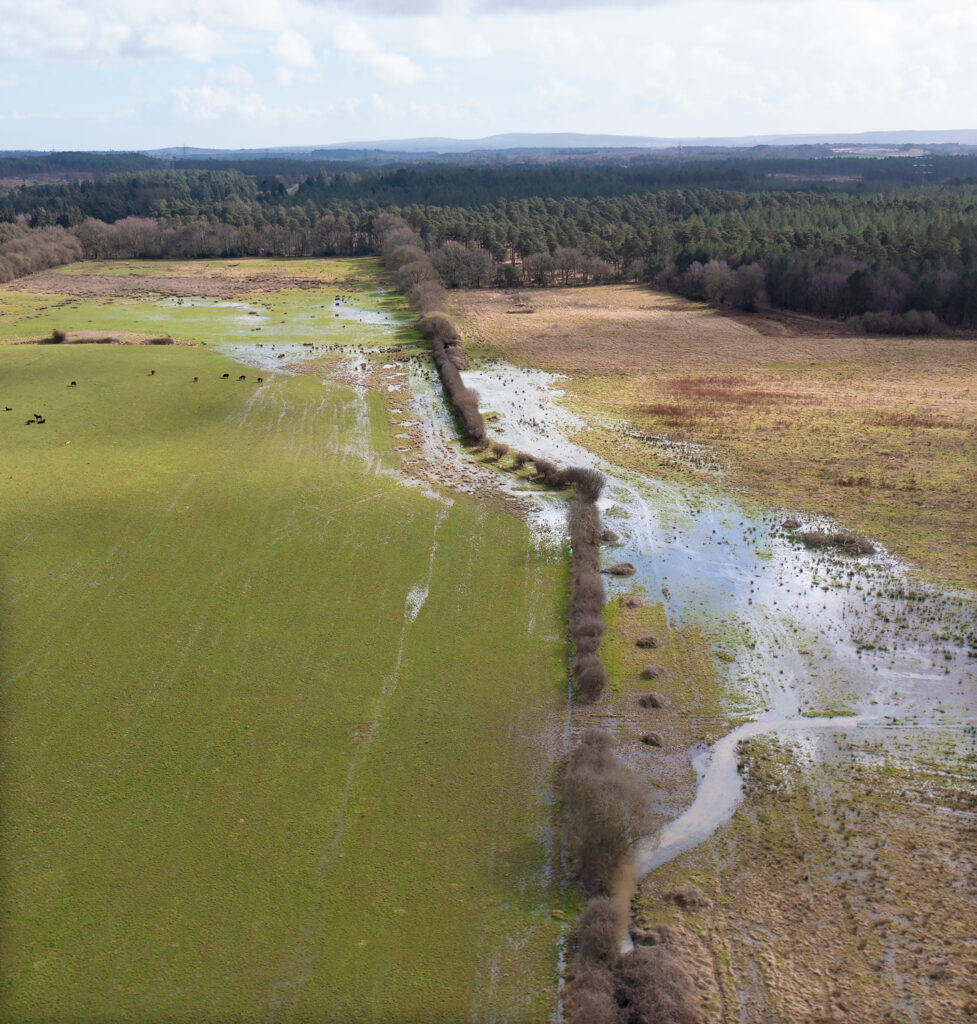
Supporting our Wildlife Trusts
Rewilding has become a bit of a buzz word, with all manner of people and organisations talking about it. To me wildlife groups like the Wildlife Trusts, whose very reason for being is to protect nature, are best placed to act as guardians of our land in the long term – not just while rewilding is a trendy hot topic.
I appreciate that some feel that in the past some of our conservation charities have taken a rather limited approach to nature restoration, as discussed in Rebirding by Benedict Macdonald. However, my experience is that their staff and volunteers on the ground are determined to update their approach and refocus on landscape scale nature restoration and allowing nature to lead the way.
By a more diverse range of people, especially more young people, getting active with their local Wildlife Trust and other conservation groups like the RSPB, we can help ensure that they continue to move with the times and recognise the latest approaches to managing land best for nature and people in the context of safe living conditions being threatened for both people and other species.
It’s particularly important that people from all walks of life, ages, ethnicity and from both rural and urban communities get to experience nature in order to ensure a shared passion to protect it. Wild Woodbury is a welcoming place for all, including those new to visiting our wild spaces.
Links at bottom:
https://www.bournemouthecho.co.uk/news/19383185.dorset-wildlife-trust-buys-site-near-bere-regis

